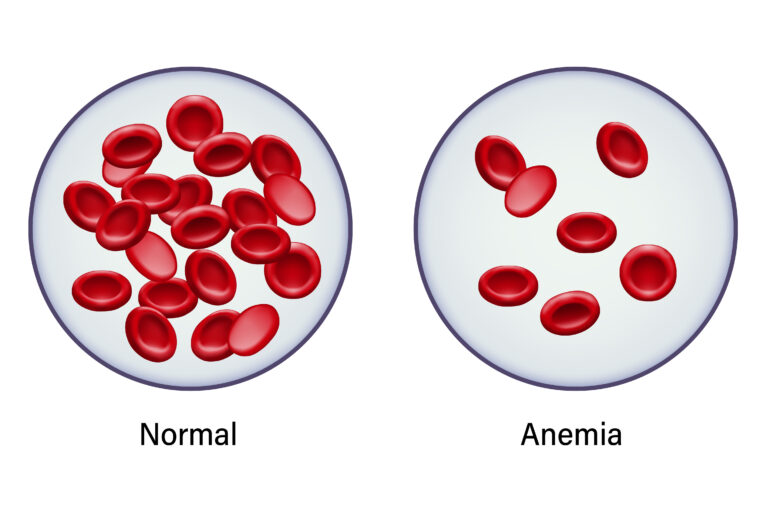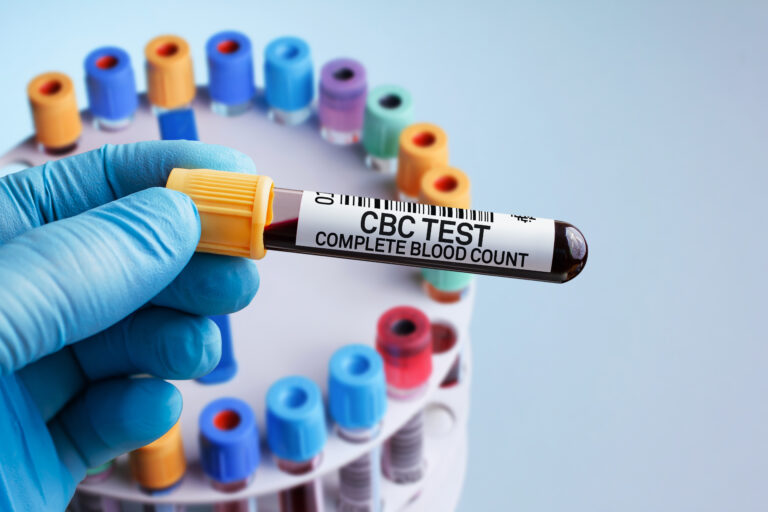By Santa J. Bartholomew M.D. FAAP, FCCM
See Corresponding Case Study: Iron Deficiency Anemia
Anemia is a widespread health concern that results from hemoglobin concentration being lower than the normal expected range, taking into consideration age and sex. The decreased circulating red blood cells are unable to meet the oxygen demands of the tissues which then result in fatigue and the inability to function properly. Children between 0-5 years of age are among the most affected by anemia. There are several types of anemia, with Iron Deficiency Anemia being the most prevalent and often an indicator of poor nutrition and poor health. Prompt identification and treatment of anemia can prevent the long lasting effects such as cognitive issues and adverse physical development.

Understanding risk factors is essential to early identification and prevention of long term consequences. Risk factors include:
- Prematurity
- Extremely low birth weight
- Umbilical cord clamping that was not delayed
- Infants born to diabetic mothers
- Prolonged breastfeeding without properly introduced iron-rich foods
- Low iron infant formula
- Excessive intake of cows milk
- HIV
- Celiac Disease
- Hook worm infestations
- Inflammatory bowel disease
- Low income
Risk Factors
Understanding risk factors is essential to early identification and prevention of long term consequences. Risk factors include:
- Prematurity
- Extremely low birth weight
- Umbilical cord clamping that was not delayed
- Infants born to diabetic mothers
- Prolonged breastfeeding without properly introduced iron-rich foods
- Low iron infant formula
- Excessive intake of cows milk
- HIV
- Celiac Disease
- Hook worm infestations
- Inflammatory bowel disease
- Low income
Symptoms
Symptoms in the early stages of iron deficiency anemia are often subtle, hence understanding the risk factors and prevention is of utmost importance. If iron deficiency is left untreated, iron deficiency anemia symptoms can manifest as the following.
- Pale skin and/or lips
- Fatigue
- Increased heart rate
- Decreased attentiveness
- Impaired immune function
- Increased respirations
- Headache
- Palpitations
- Irritability
- Restless Leg Syndrome
- Oral lesions
- Hair loss
- Nail abnormalities
Consequences
Iron is required for the maturation and function of oligodendrocytes, an important component in the central nervous system. If inadequate iron is present as the brain is developing, both in utero as well as in the early years of life, permanent cognitive impairment can result. This cognitive impairment may be irreversible even after replenishment of iron stores. Learning, memory function, decreased attentiveness, decreased voluntary activity, and skills acquisition can also be negatively impacted by iron deficiencies. In children, iron deficiency is the leading contributor to learning disabilities.
Diagnosis and Treatment
Routine screening for anemia is generally recommended at 1 year of age. However screening for children with risk factors of anemia, such as feeding problems, poor growth and inadequate dietary intake, should occur at any age. A Complete Blood Count and Serum Ferritin level are the most common diagnostic tests used to evaluate for Iron Deficiency Anemia. The threshold for low hemoglobin levels varies by age and gender.

Age Based Hemoglobin Threshold level in Children
| Birth (Term) |
1 month | 2 months | 3-6 months |
6 months – 2 year |
2-6 years |
6-12 years |
12-18 years (male) |
12-18 years (female) |
| 13.5 g/dl | 10.7 g/dl | 9.4 g/dl | 9.5 g/dl | 10.5 g/dl | 11.5 g/dl | 11.5 g/dl | 13 g/dl | 12.0 g/dl |
Serum Ferritin levels <12 mcg/L in children under 5 years of age or <15 mcg/L for children 5-12 years old is diagnostic of iron deficiency anemia. Once diagnosed, treatment with dietary modifications, iron supplementation, intravenous iron therapy, and/or red cell transfusion may be the next course of action.
Has a child you know suffered from cognitive or physical developmental issues as a consequence from undiagnosed or untreated iron deficiency anemia? If so call PME today?
References:
Wang M. (2016). Iron Deficiency and Other Types of Anemia in Infants and Children. American family physician, 93(4), 270–278.
Sundararajan, S., & Rabe, H. (2021). Prevention of iron deficiency anemia in infants and toddlers. Pediatric research, 89(1), 63–73. https://doi.org/10.1038/s41390-020-0907-5
Gallagher P. G. (2022). Anemia in the pediatric patient. Blood, 140(6), 571–593. https://doi.org/10.1182/blood.2020006479
Cappellini, M. D., Musallam, K. M., & Taher, A. T. (2020). Iron deficiency anaemia revisited. Journal of internal medicine, 287(2), 153–170. https://doi.org/10.1111/joim.13004




